Bridged Tetraspheres
Here are the 86 bridged tetraspheres.
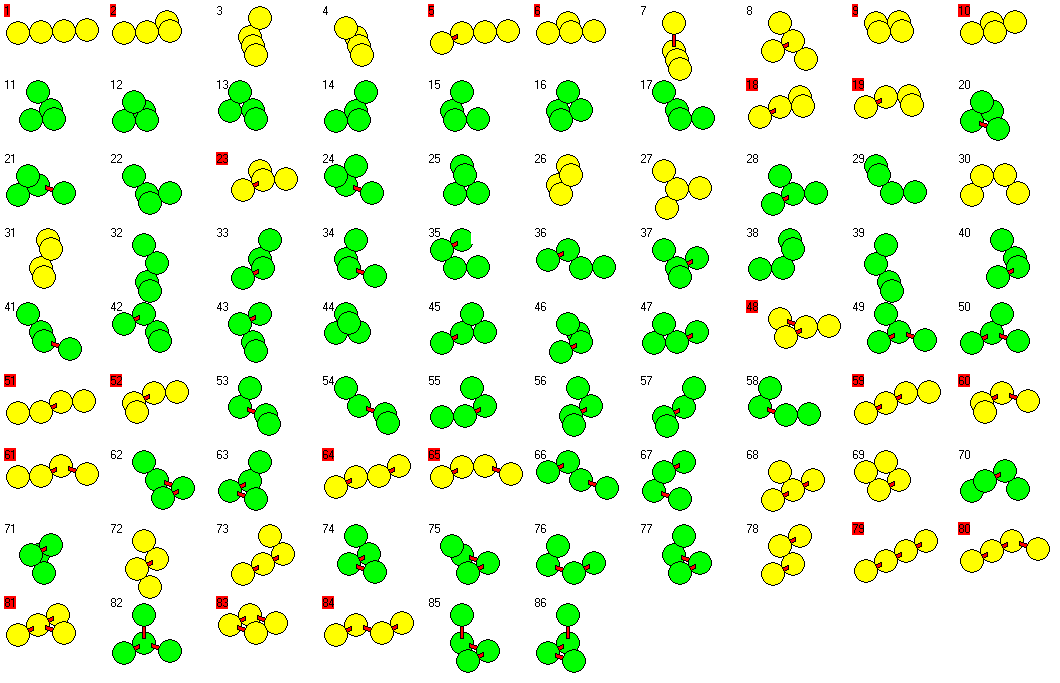
The 35 flat pieces are colored yellow. They are called flat because the
centers of all spheres lie in the same plane. Among the flat pieces there are
22 pieces which can be placed into a plane with orthogonal grid structure.
Their numbers are colored red.
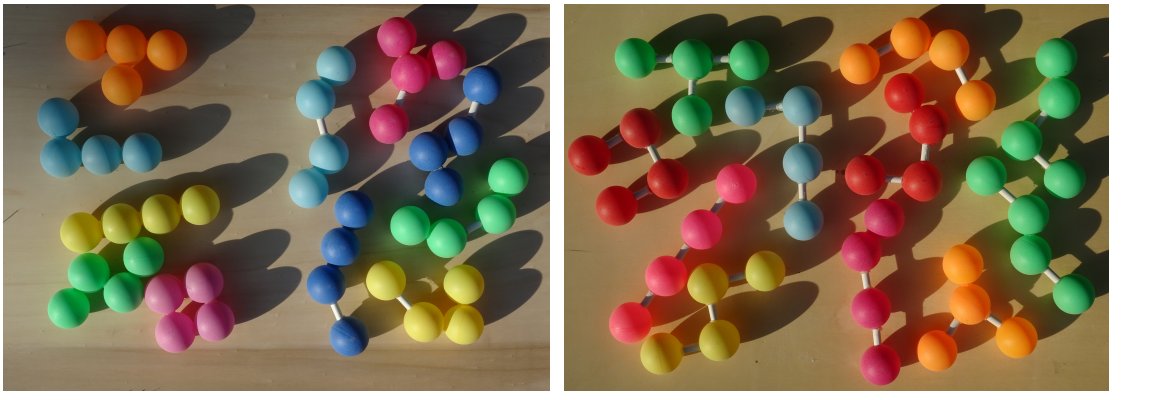
These pieces are essentially the same as the rounded or bridged tetrominoes,
if flat figures are constructed. Some of the figures are shown at
the bridged tetromino section of my site and on the
Logelium site.
Here are some figures shown with back light from a panel.
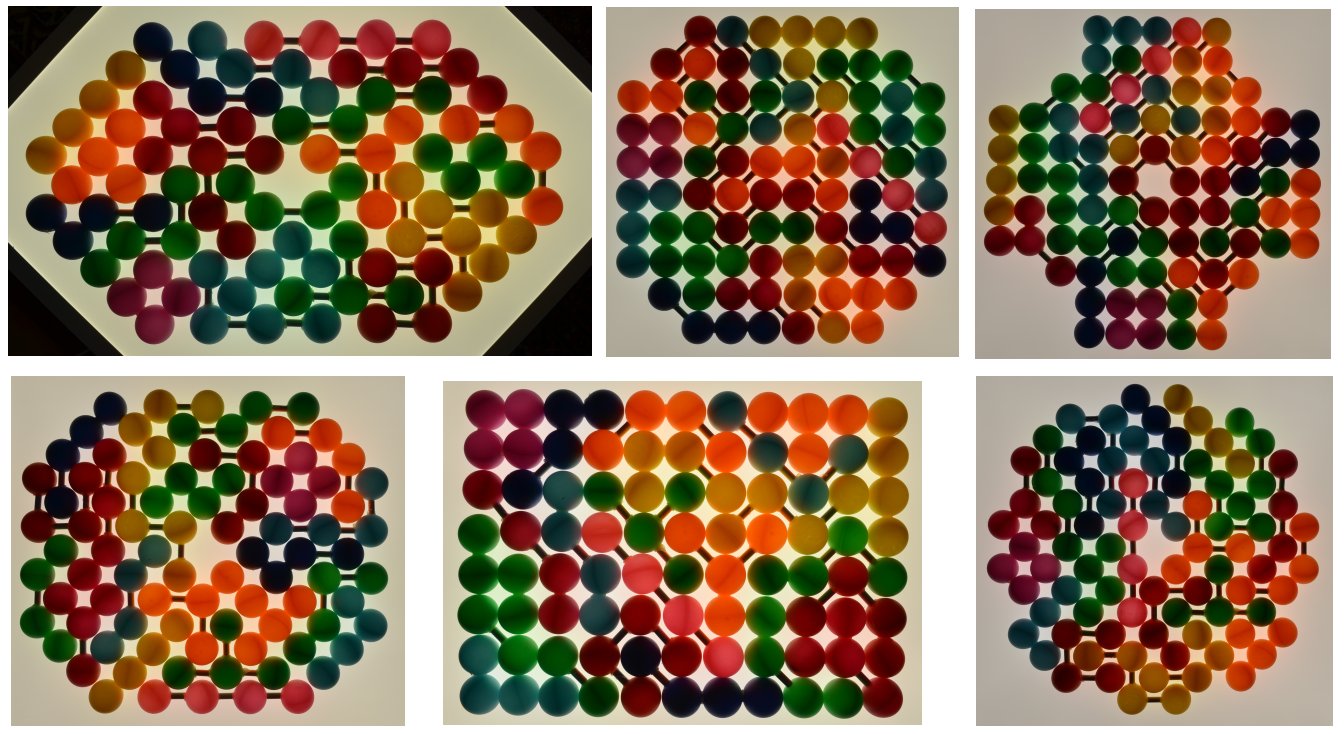
Additionally it is possible to fill a 3x3x4 box. The numbers indicate the numbers
of spheres touching the faces of the box in each direction. The acrylic panes
prevent the construction from falling apart. During assembling the pieces two panes
of the box must be movable to insert some pieces. Click the picture to see the layers.
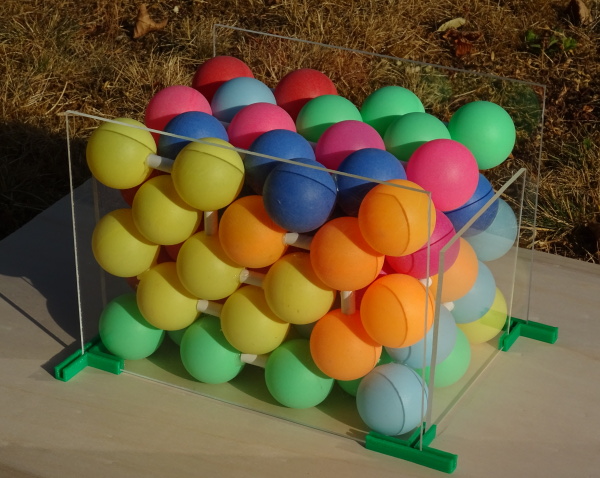
Here are the remaining 13 flat pieces.
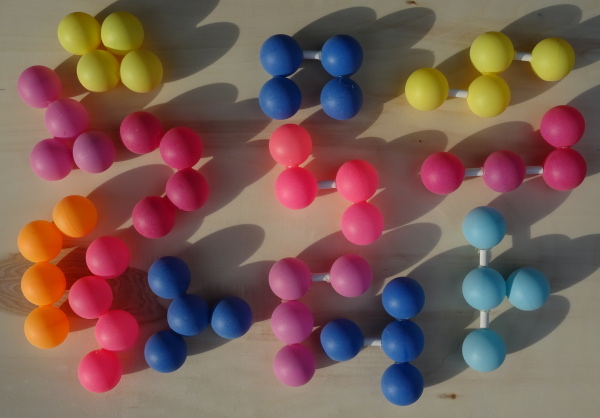
All flat pieces have a total volume of 35*4=140 spheres, which is just enough to construct a square pyramid
with a bottom layer of 7x7 spheres. There is a
problem with pieces 64, 83 and 80. They are hooked and must be put together before
they are inserted in a partly finished pyramid. Click the picture to see the layers.
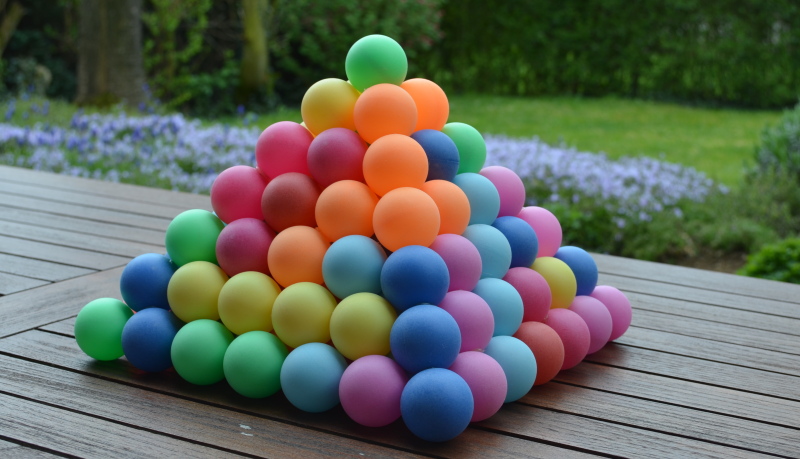
Furthermore we can make a 4x15 roof.

A podestal or dam with four layers and a bottom layer of 6x9 is also possible.
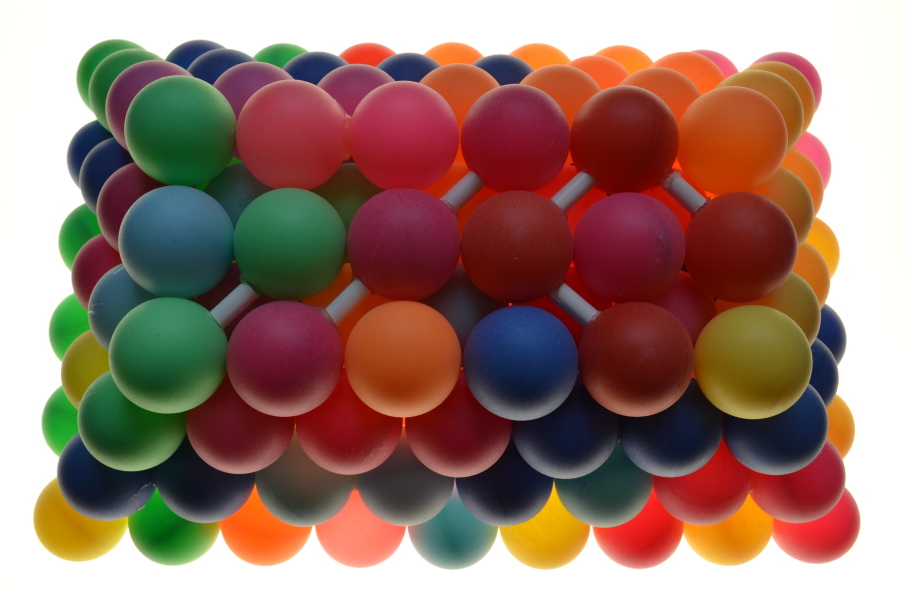
We have 51 nonflat pieces with a total volume of 51*4=204 spheres. To look for a special piece
all pieces are divided into groups of pieces with 0, 1, 2 or 3 bridges. Among the pieces with one
bridge you can count the spheres at each end of the bridge 2:2 or 1:3.
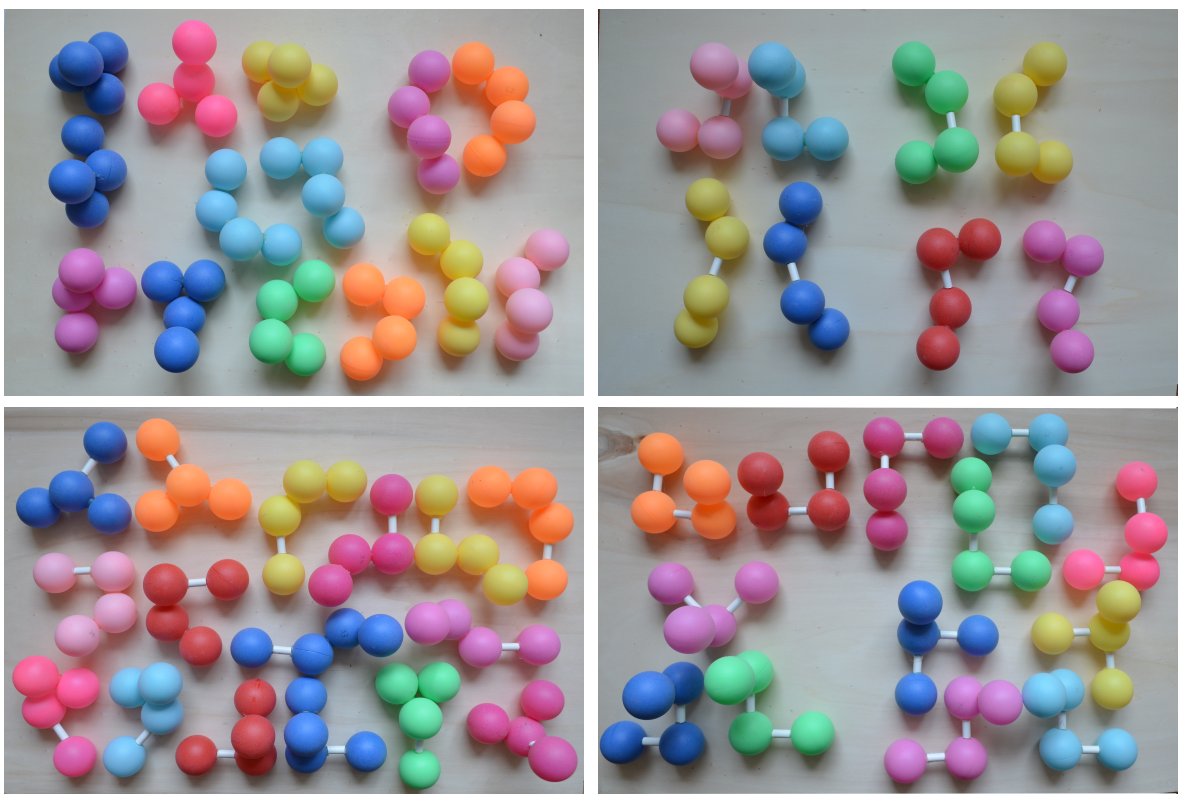
Now you can build a square pyramid of size 8.
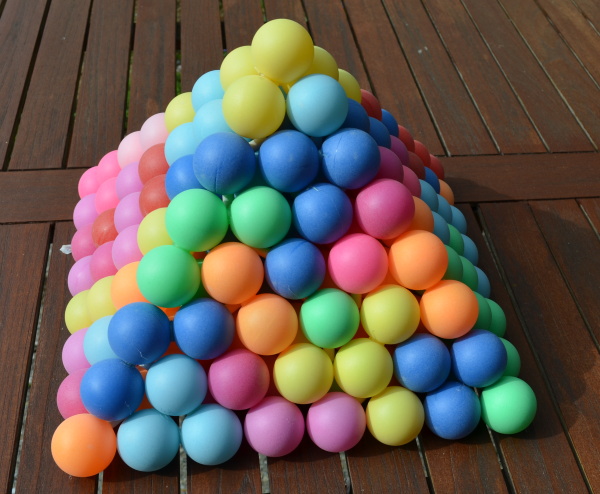
Even two tetrahedrons of size 7 and 8 can be made.
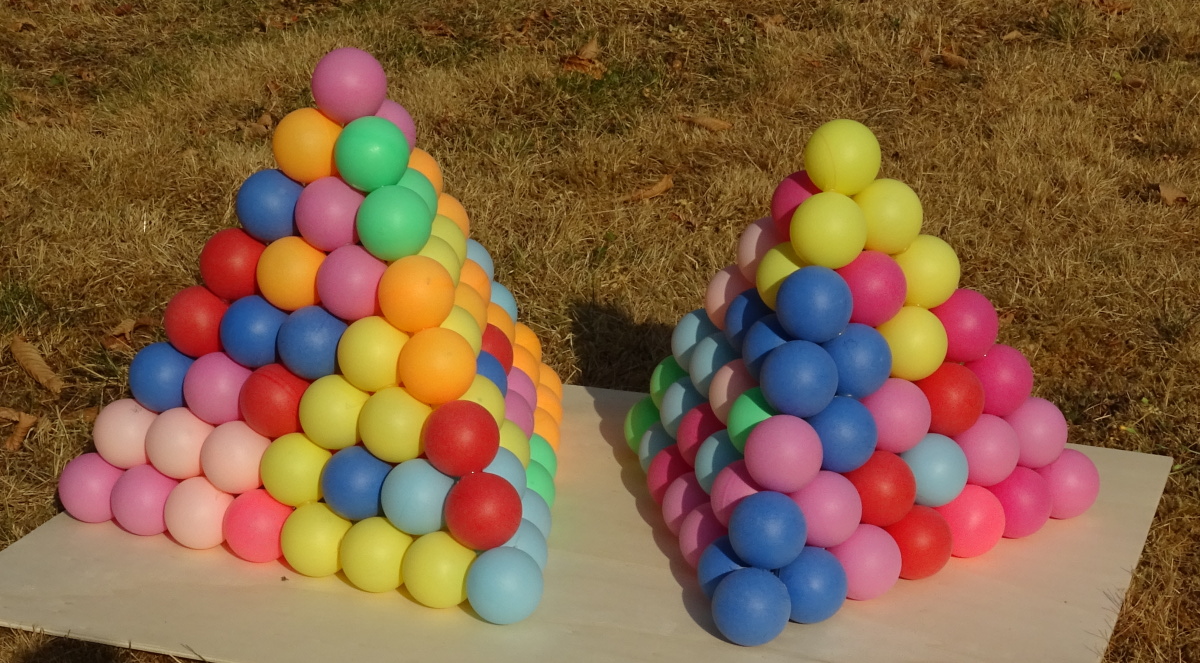
The two tetrahedron can be combined to get a triangular dipyramid.
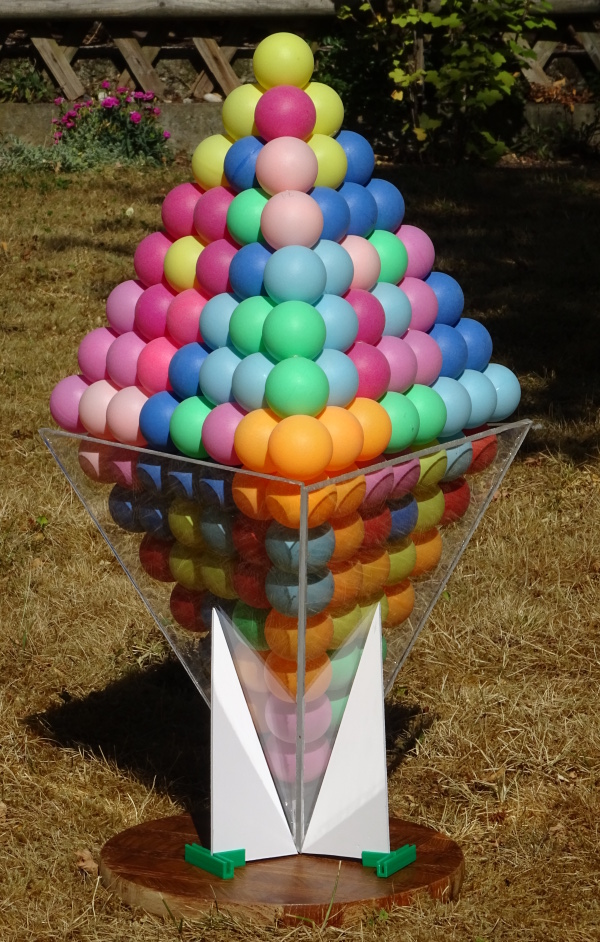
Using all 86 bridged spheres we can join the square pyramids of size 7 and 8 to get a
octahedron. This was already suggested by Jared McComb and was one of the first problems I solved.
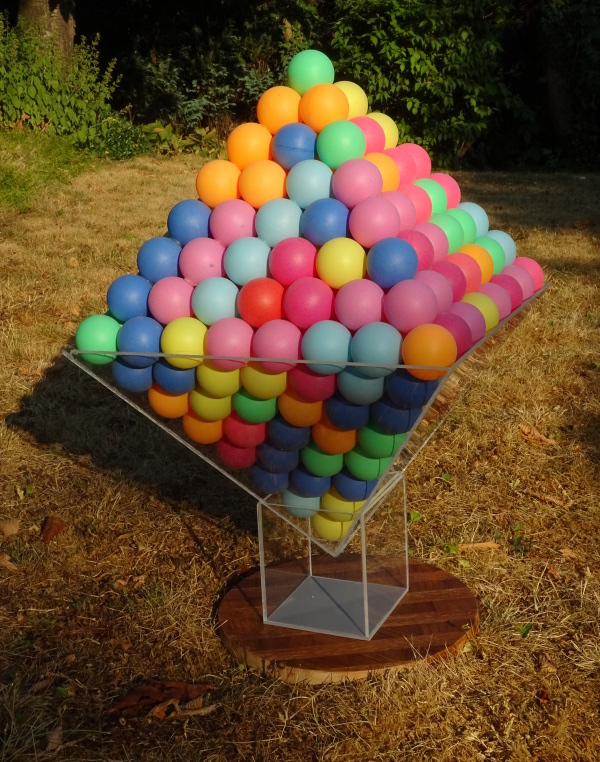
Flat and nonflat pieces together also allow for three tetrahedrons with bottom triangles
of size 2, 8 and 10.
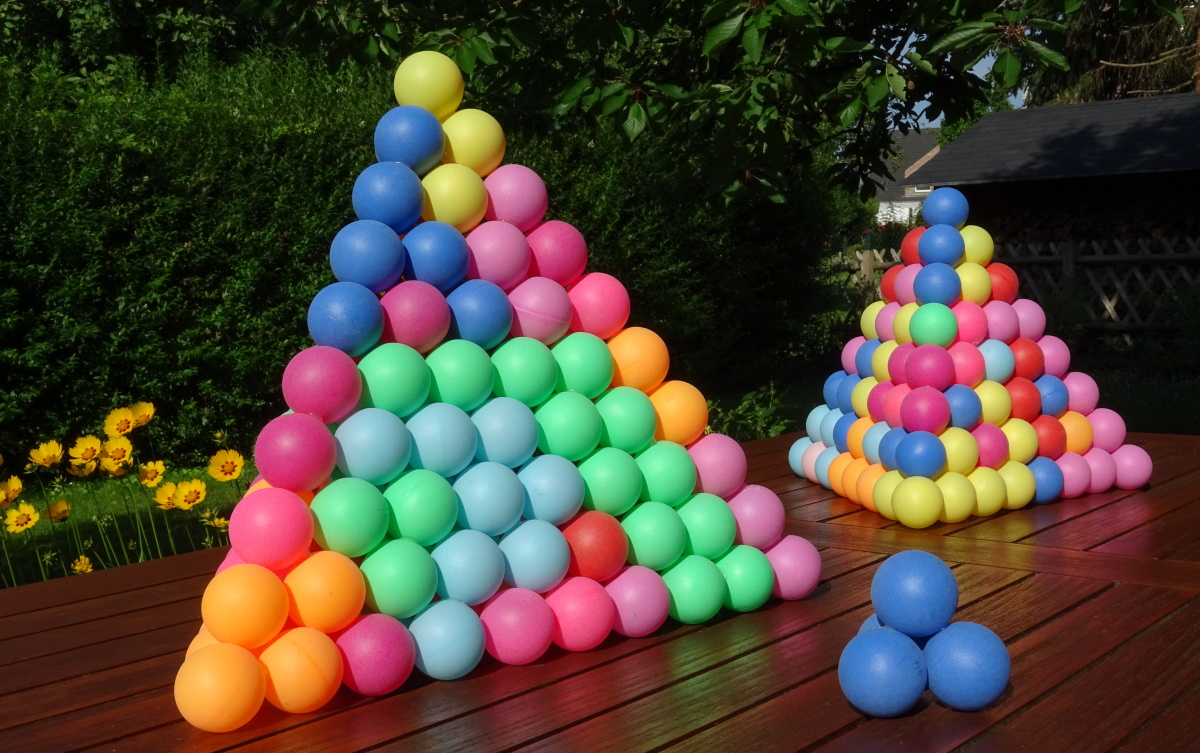
Since the pieces are shown in a coordinate system with orthogonal planes it's difficult
to determine the orientation of the pieces given the
hexagonal layers of the solution.
Therefore I used the
orthogonal layers of a solution and built a supporting
construction of card board to assemble the tetrahedrons.
A dam with 3 layers and a long bottom layer of 4x39 was solved as usual breaking the
whole construction into two or three parts with bad pieces used first. You can calculate how bad
a piece is, if you count how often it is used solving a part of the construction.
The first picture shows the three parts of the dam. Since the left and the right part are equal and
symmetric they can be exchanged and rotated. Therefore there is a difference between the picture and
the layer representation.
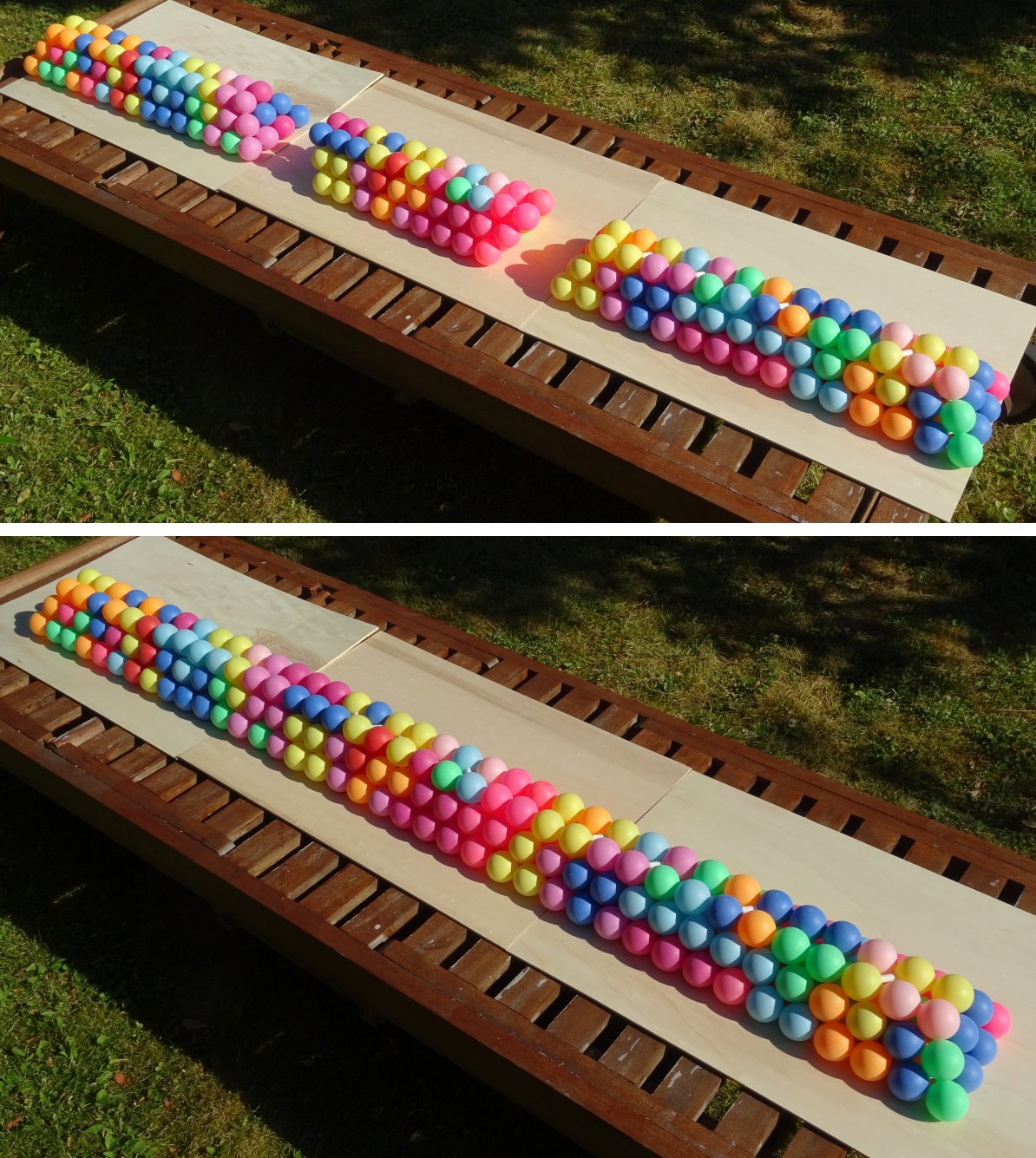
At last a pedestal with 3 layers and a bottom layer of 7x20 is shown.

Back
Home
















